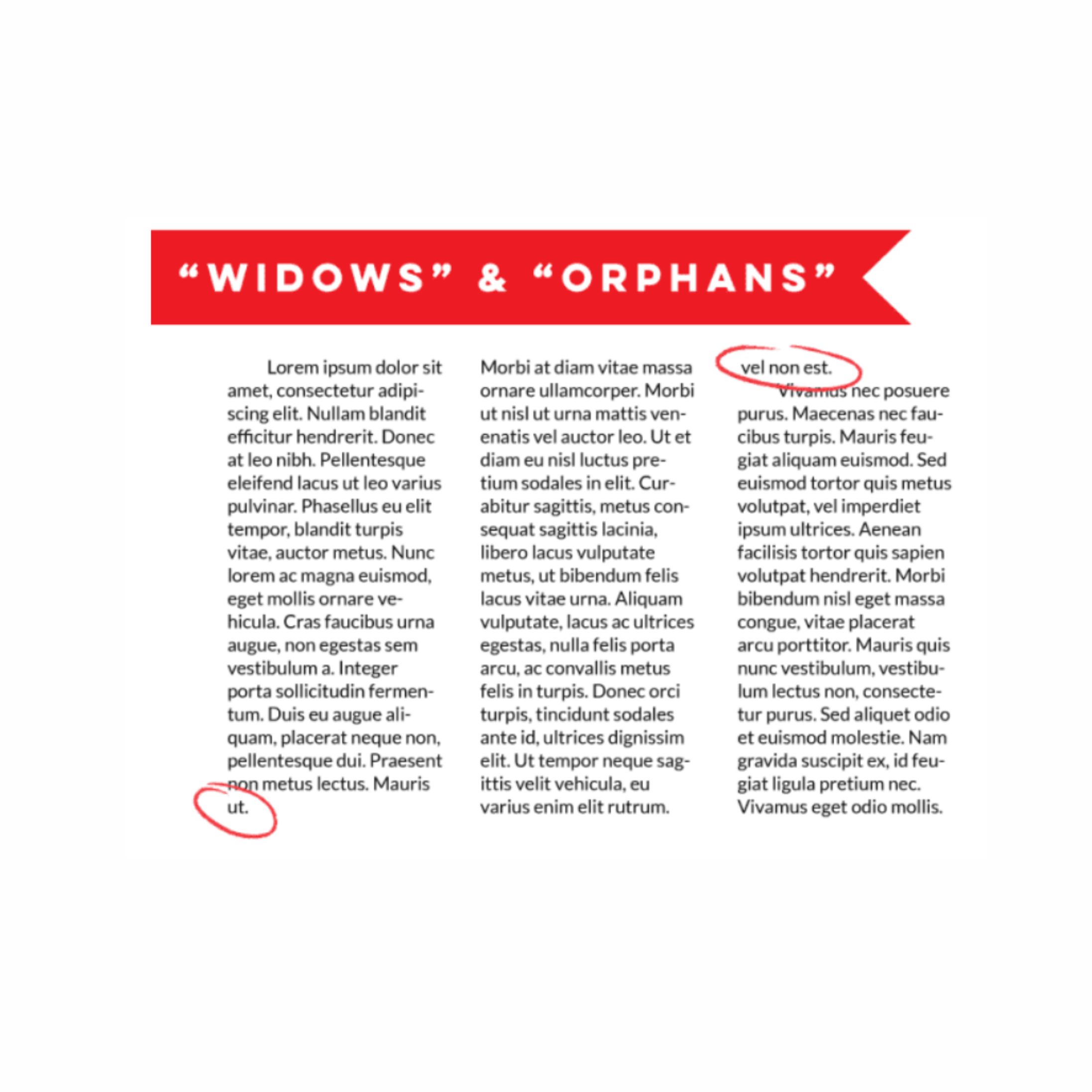
If you’ve ever read a document or article and felt like some lines looked out of place, you may have encountered an orphan or a widow. While they don’t change the meaning of the text, they can affect its appearance and readability.
What Are Orphans and Widows?
They are lines of text that end up isolated at the top or bottom of a column or paragraph. These are considered typographic issues because they disrupt visual balance and can hinder the reading flow.
Orphan: The first line of a paragraph that appears alone at the bottom of a page or column.
Widow: The last line of a paragraph that appears alone at the top of a new page or column.
Both can make the layout feel fragmented or awkward, affecting the overall readability.

Why Should You Avoid Orphans and Widows?
📌 Visual rhythm: Well-structured text enhances the flow of reading.
📌 Professional look: Avoiding these issues makes your design look cleaner and more polished.
📌 Reader comfort: A text without interruptions is easier to understand and more enjoyable to read.
How to Fix Orphans and Widows
✨ Manual review: Before finalizing a document or design, check for isolated lines and adjust as needed.
✨ Adjust spacing: Slightly increasing or decreasing line spacing or tracking can help resolve the issue.
✨ Edit the text: Sometimes, adding or removing a word can shift the paragraph layout and eliminate widows or orphans.
✨ Use layout tools: Programs like InDesign or Microsoft Word offer settings to automatically prevent these typographic issues.
Orphans and widows may seem like minor details, but they have a significant impact on the aesthetics and readability of your content. With just a few tweaks, you can ensure your text looks cleaner, more professional, and easier to read.
Web Fonts
Latest Posts
Follow Us
